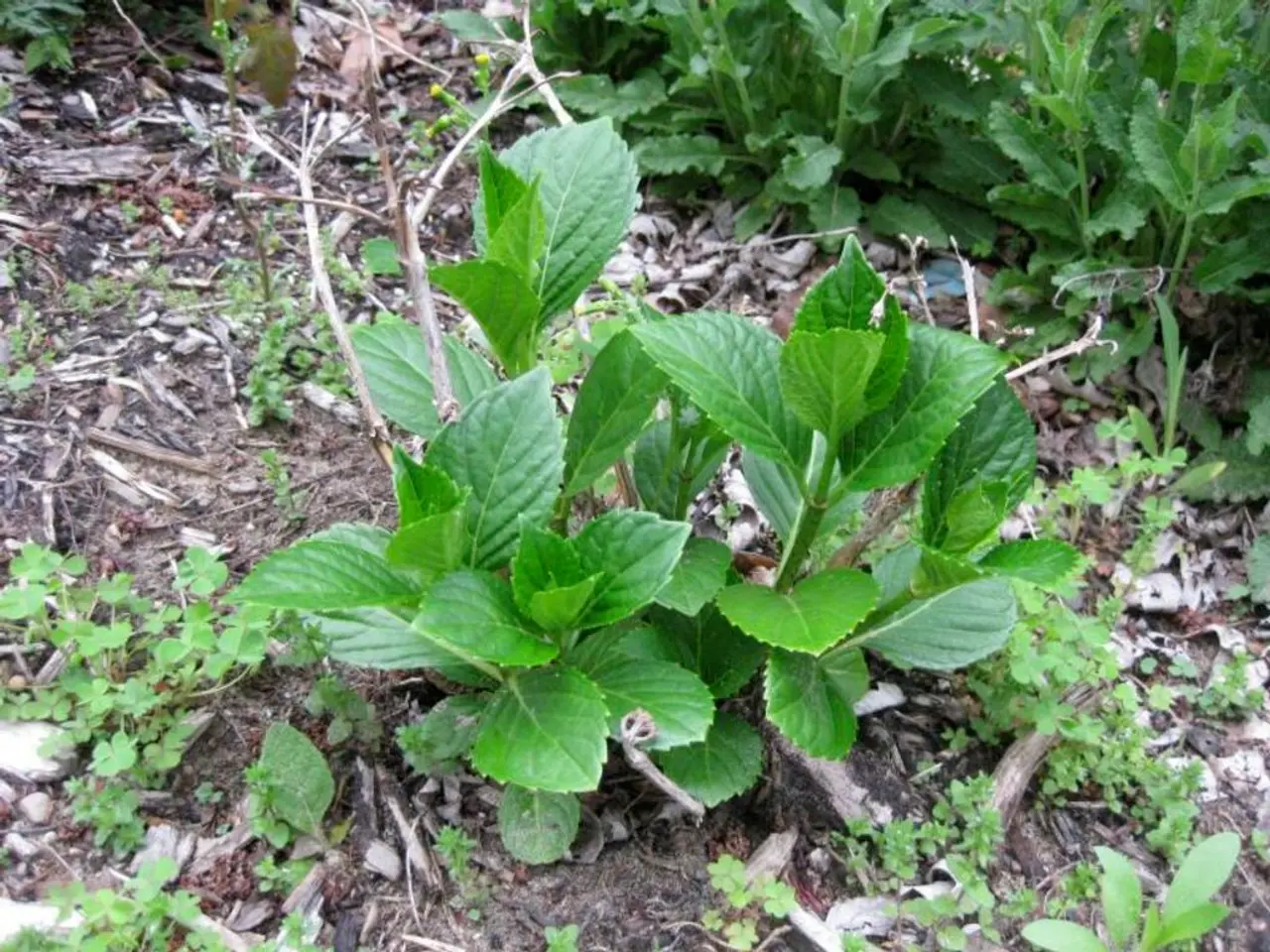Grow a blend of aesthetically pleasing herbs and edibles in your flowerbeds for a culinary and visually stunning garden - Cultivate an Herbal Edible Paradise in Your Flowerbeds
In the world of gardening, ornamental herbs have been gaining popularity as they offer a unique blend of beauty and functionality. These herbs, such as basil, parsley, and chives, are well-suited to both flowerbeds and container gardens due to their compact size and manageable care needs.
Growing ornamental herbs in containers is an excellent way to maximize limited space in smaller yards. Containers can be placed on patios, balconies, or small corners, allowing herbs to flourish without requiring large flowerbeds or garden plots. This versatility also allows gardeners to move containers to follow sunlight or shelter plants if needed, making them ideal for restricted or shady areas.
Moreover, ornamental herbs enhance visual interest with their foliage and flowers, while simultaneously offering culinary uses and fragrance. The decorative greenery and texture they provide add charm to small garden spaces. Containers come in various styles and sizes, enabling gardeners to personalize their small yard by mixing herbs with flowers or other ornamentals in attractive combinations.
Container gardening also simplifies soil management and reduces weed competition compared to traditional flowerbeds. This reduces garden maintenance, making it easier for gardeners to maintain a beautiful and functional garden.
Some examples of ornamental herbs include Artemisia, Catmint, Chamomile, Borage, Alliums, Bee Balm, Sage, and various types of parsley, thyme, marjoram, rosemary, and lavender.
Artemisia, also known as wormwood, has a long history of use in traditional medicines and grows wild in many locations. It prefers full sun to partial shade, consistently damp soil, and moderate fertility, and is hardy to USDA zones 3-8.
Catmint needs little care outside of occasional watering and deadheading and will produce a dense, small shrub over time. It is hardy to USDA 3-8 and irresistible to cats, making it useful in borders, rockeries, and perennial gardens.
Chamomile has feathery leaves and cheery white rayed blooms with yellow centers. Borage forms a small bush with green, pointed leaves, lightly furred stems, and fuzzy flowers. The blooms are blue, with five petals and soft, downy fur. Both herbs are hardy in USDA zones 3-10.
Alliums, including chives, garlic, leeks, and onions, also produce lovely blooms. Bee balm is a perennial in USDA zones 4-9 and has a slightly minty flavor when used as a culinary herb. Sage has over 1000 species, with pungent stems, leaves, and flowers that have a strong flavor often used with poultry.
Basil is an annual in most regions but can be grown indoors when cool temperatures threaten. Thyme, marjoram, curly and flat-leaf parsley, rosemary, and lavender are other ornamental herbs that can be added to the garden.
Bee balm has flowers ranging from scarlet to white, to lavender, and is attractive to bees and hummingbirds. The blooms are spidery and extremely alluring. Herbs like basil, chamomile, and sage have attractive leaves and grow in appealing ways.
In conclusion, ornamental herbs are an excellent choice for smaller yards where optimizing space and aesthetics is essential. These herbs offer a practical solution for gardeners looking to create a beautiful and functional garden in limited spaces.
ornamental herbs, such as basil and chamomile, can enrich a home-and-garden lifestyle by providing both aesthetic appeal and functionality, with their attractive leaves and flowers, culinary uses, and fragrance.
Container gardening with ornamental herbs like Artemisia, Catmint, Borage, and Sage allows for easy customization of small yard spaces, as containers come in various styles and sizes, enabling gardeners to mix herbs with flowers or other ornamentals.





